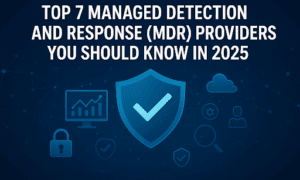Websites do not want to be inundated with requests, and they want real human visitors, not bots or scraping entities. In order to protect their content, they will employ a number of tactics to eliminate unsavoury behaviour.
Services offering Backconnect Proxies enable users to get around such restrictions. Backconnect proxies change your IP address, and can simulate real user behaviour, avoiding common traps set by websites.
Let’s go through the top five methods of blocking that websites will employ to monitor your activity on their sites – and how a backconnect proxy setup can help you bypass those blocks.
1. IP Rate Limiting
A lot of websites track the number of visits that a single IP address makes to their web page, and if one IP makes too many requests in a short amount of time, it is flagged. You will usually get a temporary or permanent ban. Again, this is a common form of bot detection.
Backconnect proxies overcome this method by rotating your IP address with every request that you make. Instead of sending 100 requests from a single IP address, you are sending 100 requests from 100 different IP addresses. To the website, you now appear as 100 different visitors. This completely bypasses the rate limits that the website has implemented.
For those needing high-speed performance at scale, HypeProxies offers some of the fastest ISP proxies on the market — delivering speeds up to 10Gbps — ideal for bypassing IP blocks while maintaining speed and stability.
Core Benefit:
- Sends requests from many IPs, not one
- Avoids triggering flood detection
- Keeps your access stable even at scale
2. Browser Fingerprinting
Websites are now collecting information beyond just your IP. They also collect information about your browser type, screen size, time zone, fonts, and even how fast you move your mouse, to create a unique “fingerprint” to track you even if you change IPs.
At the same time, advanced backconnect proxy tools work very well with browser spoofing tools because these two together create a new identity for every request. In this case, the fingerprint scanner has to think that you are a new visitor every time.
Most Important Tools:
- Rotating IPs + rotating device data
- Support for mobile and desktop headers
- Randomized browser fingerprints for each session
3. CAPTCHA Triggers
Sites such as Google, Amazon, and Instagram deploy CAPTCHAs to prevent bot traffic. CAPTCHAs prompt you to solve a puzzle if the site thinks you’re using an automated tool. CAPTCHAs slow your crawl and often prevent your scripts from running altogether.
When requesting too frequently from the same IP, device, or behavior, you will trigger a CAPTCHA. Backconnect proxies will reduce that likelihood with random requests. Further avoid writing triggers by using delays as if you are human or a headless browser, and you will most likely evade the CAPTCHA threshold.
Anti-CAPTCHA Strategy:
- Rotate IPs to look like many users
- Mimic natural browsing speeds
- Use headless browsers with stealth mode
4. Static Proxy Blacklists
Many sites have lists of banned IP addresses in a given time period. This often includes a listing of data center proxies which originate from the likes of AWS, Google Cloud, or any similar provider. Data Center IP’s can be identified quickly because they do not look like actual user connections.
Backconnect proxies (residential proxies) use IP’s derived from an actual user’s device, such as their home internet connection. Residential IP’s will not be blacklisted and look perfectly natural to most systems. This is why when you may have to choose residential vs data center proxies for something like web scraping, ad verification, or method automation you would choose residential proxies.
Why This Works:
- Uses IPs from clean residential sources
- Avoids common hosting-provider blocks
- Slips past reputation-based firewalls
5. Session Tracking and Cookie Monitoring
Websites use cookies and session tokens to track users. When you clear cookies and refresh too quickly, it can raise red flags. If your session behavior isn’t matching that of a real person, the site will assume that you are a program/bot.
Backconnect proxy networks can make fresh sessions available for each request. When you follow these with session handles, each visit receives a new cookie trail. This excessive overlap makes it extremely difficult for the system to relate one action to the next.
Tracking Bypass Checklist:
- Clear cookies between requests
- Rotate user-agents, IPs, and headers
- Mimic session behavior of real users
Final Thoughts: Outsmarting the Blocks
Websites expend a lot of energy protecting themselves against bots; they’ve got IP tracking, automation detection, and (browser) scraping fingerprinting. But with the right proxy infrastructure in place, you can still collect and extract data without registering or triggering alarms.
Backconnect proxies are proactive and counter each layer of protection by using IP rotation, residential IP addresses, and mimicking behavior of real users. In conjunction with clean scraping scripts and delay-randomizing logic, then you can access those sites that would otherwise cut you off.
If your business collects data, runs tools, or automates at scale, getting around these blocking measures is an absolute necessity for being productive and effective. Even now backconnect proxy systems are still the most effective and dependable way to do this.



































